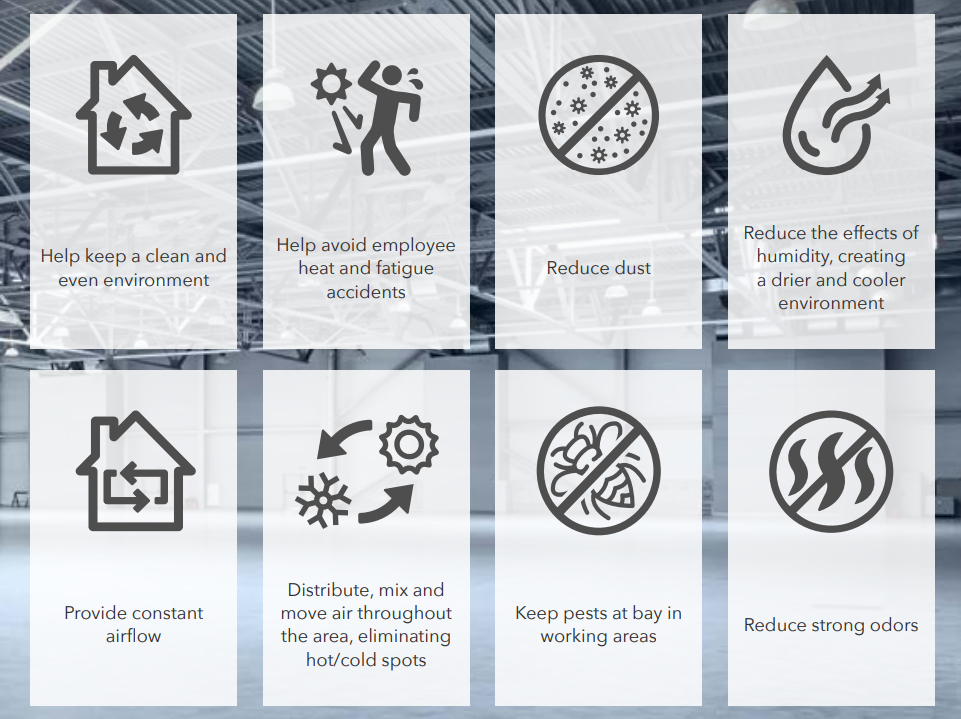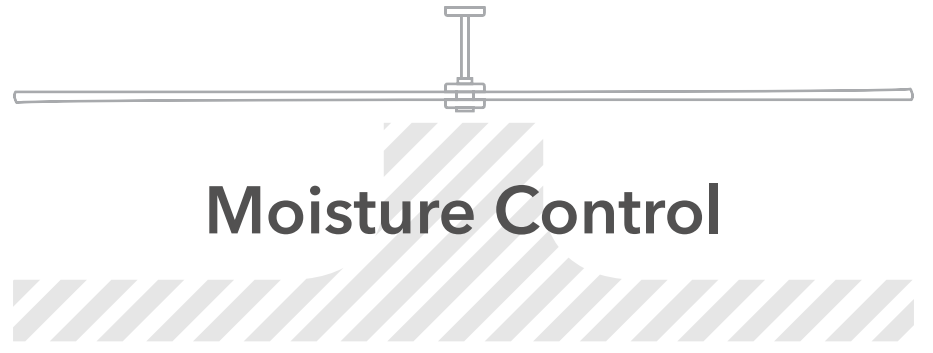Diamond’s HVLS ceiling fan, provides the widespread air movement facilities needed to help drive down operating costs year-round while keeping occupants comfortable and safe.
Diamond’s direct drive motor technology is specifically designed for the HVLS market, making it quiet and energy efficient while providing the highest level of air movement from Fans. Diamond’s patented, structural-grade steel blade holder ensures a safe, secure fit at the perfect blade pitch every time.
Ideal Environments
- Manufacturing Facilities
- Warehouses
- Distribution Centers
- Agriculture & Horticulture
- Fitness Centers
- Automotive Centers
Diamond makes some of the most efficient fans in the world, providing massive performance while using less power. Less power leads to lower operating expenses and year-round savings for you. Save on energy usage compared to other HVLS fans and up to 12 times the air movement of conventional high-speed fans.
HVLS FAN BENEFITS

FEATURES
- Direct Drive Motor Designed Specifically for the HVLS Industry: Gone are gearboxes to control the power and speed of HVLS fans. Diamond created the direct drive motor specifically for HVLS fans delivering efficiency.
- Industry Leading Efficiency: Combine Diamond’s direct drive motor, blade profile, and simple installation, and you get the most efficient HVLS fan in the industry.
- Cutting Edge Blade Technology: Aerospace Engineer designed fan blades that are fitted perfectly with the motor to maximize efficiency across the range of speeds and diameters.
- Effortless Install: Diamond HVLS fans deliver a simpler and quicker install by using lighter components, optimizing blade counts, and pre-wired downloads.
THE DIFFERENCE BETWEEN A HOME CEILING FAN AND AN HVLS FAN

DESTRATIFICATION
HVLS fans are designed to aid in destratification (reducing hot and cold spots) by mixing air in large spaces. This results in significantly reduced energy costs and increases environmental comfort. Continuous mixing of air will promote a more uniform temperature profile from floor to ceiling.
Excess moisture and humidity can lead to issues such as rust and damp corrugated cardboard boxes. Increased airflow is key to controlling condensation and corrosion. The air movement produced by commercial and HVLS fans can keep condensation from setting on the floor or product.

VENTILATION
Increasing ventilation rates and air distribution can often be a cost-effective means of reducing indoor pollutant levels and providing relief to employees. Many HVAC systems do not meet ventilation standards; HVLS fans can dramatically increase their effectiveness.
For example, by minimizing ceiling-to-floor temperature differentials and increasing the surface evaporation rate, they help to reduce or eliminate slab sweating. For sick building syndrome*, the increased air movement HVLS fans provide helps dissipate humidity and disperse concentrations of airborne contaminants, such as chemical fumes, pollens, bioaerosols, or other volatile organic compounds (VOCs).
LOW ENERGY CONSUMPTION
HVLS fans can reduce winter destratification and summer cooling expenses by as much as 30% and cost just pennies an hour to operate.
Warm Weather Strategy
Air conditioning in an industrial building can be expensive and complex. Size, occupancy, interchanging of people, open doors, and large windows make consistent indoor climate control difficult. An industrial fan can help move conditioned air throughout the facility, keeping temperatures consistent, and in many cases allowing the thermostat set point to be raised by up to 4 degrees while maintaining the same level of comfort.
Cold Weather Strategy
An industrial fan redirects warm air from the ceiling to the floor level, while cooler air at the floor is pulled up – reducing unnecessary heating and cutting energy use by up to 30%.

